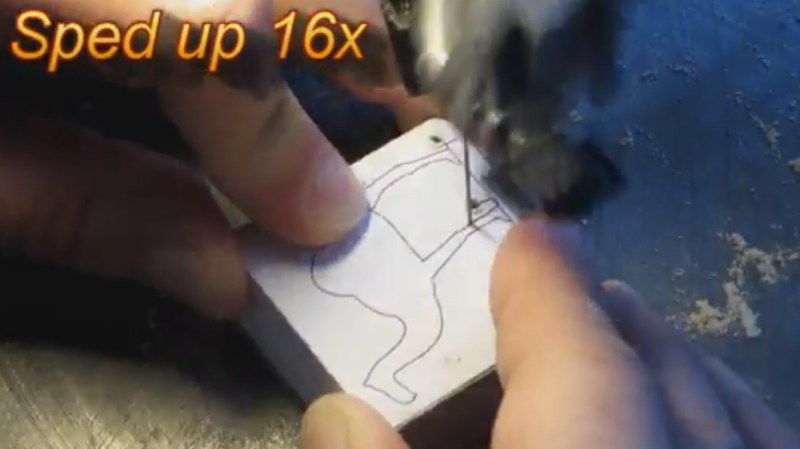These days most have come to think that if you want to make a complex 3D object with all curved surfaces then a 3D printer is the only way to go. Many have even forgotten that once such things could be hand carved. [JEPLANS], on the other hand, is a master at making these objects using only a scroll saw as he’s done with his latest, a miniature camel cut from a single block of maple.
His process has a lot of similarities to 3D printing. He starts with a computer drawn design, in this case for the camel’s front and side. After cutting it out, he peels off the unwanted pieces and the camel emerges like magic from the block. But he didn’t like the amount of manual work he’d need in order to improve it further so he modifies the design by adding a top view, iterating just as you would with 3D printing. But after cutting that out, he finds he’d damaged one of the legs. And so he cuts out a new one but only after making one more design change, this time adjusting the camel’s head position. And with that result he’s satisfied. Check out his painstaking and somehow familiar process in the video below.
His isn’t the only masterful scroll saw work we’ve seen on Hackaday. Check out this beautiful acrylic skeleton clock with gears and linkages cut using a scroll saw.
















That was about as shocking as a sailor with syphilis.
It’s really strange to me how 3d printing enthusiasts suddenly have a hard time imagining that there are other ways to form 3d shapes at home, and are surprised by the existence of basic craftsmanship using simple non-cnc tools. This technology seems to have a strong “if the only tool you have is a hammer” effect. I wonder how that affects our designs and thinking.
I suppose it’s nothing new, for example we’ve been dealing with the features of injection-molded design for so long that I often notice my designs use shapes which have the requirements of an entirely different manufacturing technology in mind. It takes a lot of exploration and attention to different methods to root out that kind of thinking and start designing freely without bad habits or unnecessary limitations. Getting some basic woodworking and machining tools is incredibly freeing and empowering.
The bigger your tool box is, the more efficiently you will be able to solve problems. there is a tool for every job and multiple ways to use each tool, selecting the right one is a matter of a multi-variable balancing act to determine which to use (cost, time, strength, complexity, accuracy, precision, etc). Once you understand the tools at your disposal you will be able to design things to take into consideration the manufacturing method as well.
Speaking about some I’ve encountered who’ve never made anything in their life, I think they see a 3D printer as the only way to do it because it “seems” so plug-and-play. To a lot of them, any other way is black magic or needs skills they think they could never have.
Another reaction I’ve gotten when showing something made almost entirely of wood (with the help of a scroll saw) is that of surprise since they considered it the old way of doing things.
speaking of irrelevancies, i was taught this mnemonic. that’s a one-humper, which must be a Dromedary. Look at the letter “D”: one hump. The two-humpers? Look at the letter “B”. Bactrian. tada. you’re welcome.
nice!
I seem to remember those 3 view on a grid plans in pop mechnix or one of those zines for making kids toys on the bandsaw.
It’s nice seeing low-tech fabrication featured here on Hackaday! It’s not as ‘cool’ as 3D printing, but there is a lot you can do with it (and it’s a great education).
If you can’t do it with a laser, it’s not worth doing.